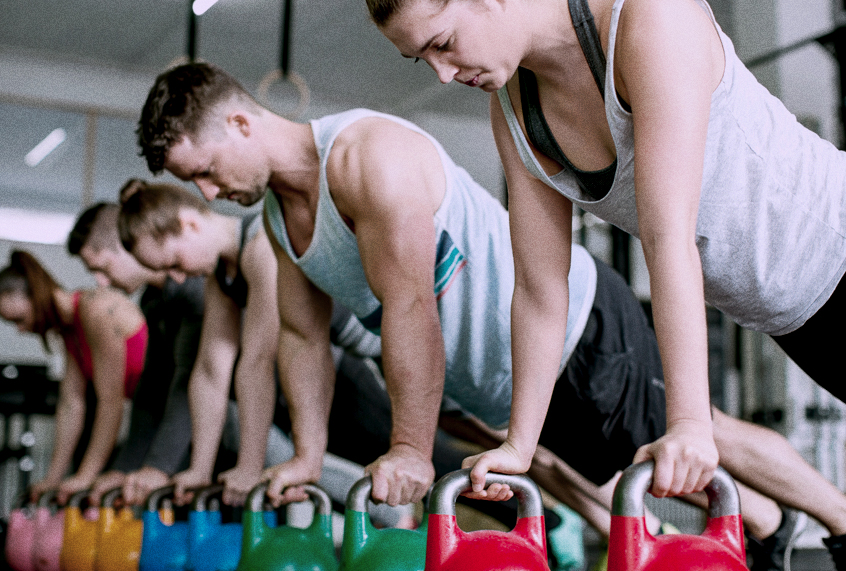For all the bad takes about the yoga pants fad, there are generational reasons why they have become a staple among millennials. Attend any group fitness class, yoga or otherwise, and you’re bound to see a young person donning the skin-tight workout gear. Yet the popularity of yoga pants over the last few years might have less to do with yoga specifically than with reflecting the millennial generation’s obsession with fitness; indeed, a recent study by the Physical Activity Council (PAC) claims that my generation is more physically active than our predecessors.
The 2018 report, which surveyed 30,999 Americans, divided different generations into five activity levels, ranging from “active to a healthy level” to “inactive.” According to the report, nearly half of millennials (ages 19 to 38) participated in high-calorie-burning activities in 2017, while an estimated 25 percent remained sedentary. Sixty-five percent of the younger cohort, Gen Z, were “casually active” in 2017; Generation X (ages 39 to 53) were almost on par with millennials’ activity patterns, but were reported to be generally less active. The report also noted that millennials are more likely than other generations to participate in watersports, such as stand-up paddleboarding and surfing.
Rachel Kazez, LCSW, a licensed therapist in Chicago and the founder of All Along, told Salon she has observed that fitness is an important part of millennials’ lives, more so than in previous generations.
“It seems like it’s a more active part of their lives, something they do intentionally and as a priority rather than an afterthought,” Kazez said. “It also seems like they try to make it more enjoyable and colorful, many being willing to spend money on memberships and specialty fitness activities.”
There is a price to pay for this generation to be active, though. In big U.S. cities like New York City, Chicago, Los Angeles and San Francisco, a yoga or Pilates class can range from $20 to $35. In January, multiple blogs and news outlets reported that millennials may spend more on fitness than college tuition in their lifetimes.
Yet those reports generally did not highlight the income inequality within the world of fitness.
According to the 2018 Sports & Fitness Industry Association Topline Participation Report, over the last five years inactivity actually increased for those whose household incomes are less than $50,000; meanwhile, those who made an income of $75,000 or more displayed an increase in activity. “The affluent are getting more active while the less affluent are becoming more inactive,” the report stated.
However, that report did not provide insights into income inequality’s varying toll on different generations. As Salon has previously reported, not all millennials are financially thriving.
Perhaps for millennials, fitness has taken on a new meaning — and a means to seek out community. Nathalie Theodore, JD, LCSW, who is a psychotherapist in Chicago, says she believes millennials are the first generation to prioritize fitness.
“While Gen Xers and Baby Boomers are still mostly working out to burn calories, millennials are turning to fitness as a means of making friends, meeting potential love interests and networking,” Theodore said. “Previous generations have regarded self-care as an indulgence, and perhaps feared that making time for regular exercise would take time away from work or relationships.”
One might wonder if the millennial obsession with fitness is linked to the generation’s high depression and anxiety rates. “Unlike previous generations, I think millennials are eager to use exercise to manage anxiety and depression because they believe it’s effective, and there’s ample evidence today showing that it helps,” Theodore added.
Loneliness, Theodore said, is a contributor, too. A recent study by Cigna, which surveyed nearly 20,000 Americans, found that nearly 45 percent of millennials and Gen Xers often had feelings of being alone, isolated or left out.
“With the rise of technology and social media, we’ve also seen a dramatic increase in loneliness,” she told Salon. “In order to combat that loneliness, millennials are seeking opportunities to connect with others and cultivate a sense of community through group fitness.”
Mira Reverente, an entrepreneur and journalist who counts herself among Generation X, said she has found community in her favorite physical activity: hiking.
“I have made so many good friends from my club, Girls Who Hike LA,” she said. “We look out for each other, we hang out when we’re not in the mountains, we check on each other — having no biological sisters, I really love this sisterhood that I’m so fortunate to be a part of,” Reverente told Salon.


